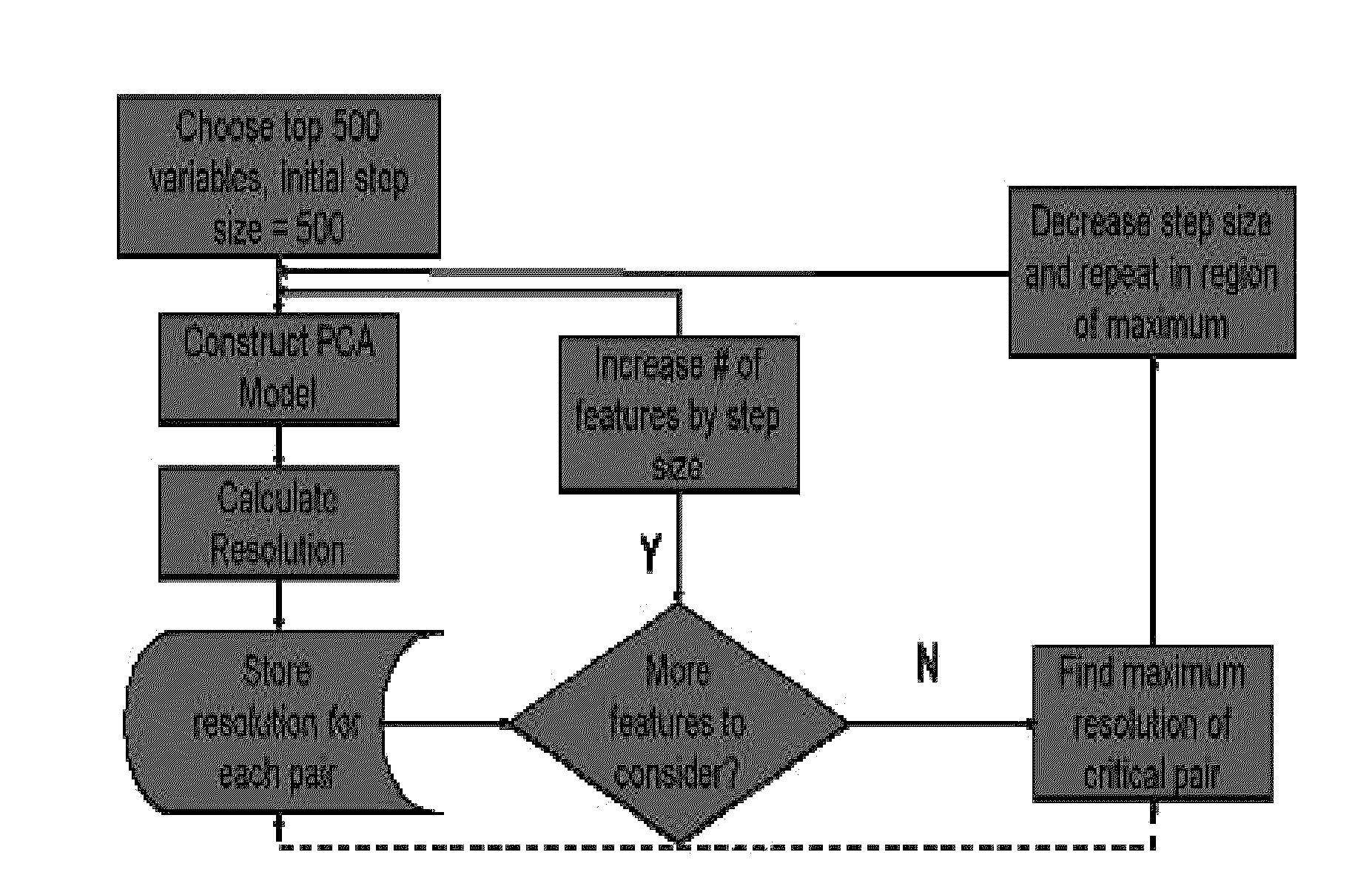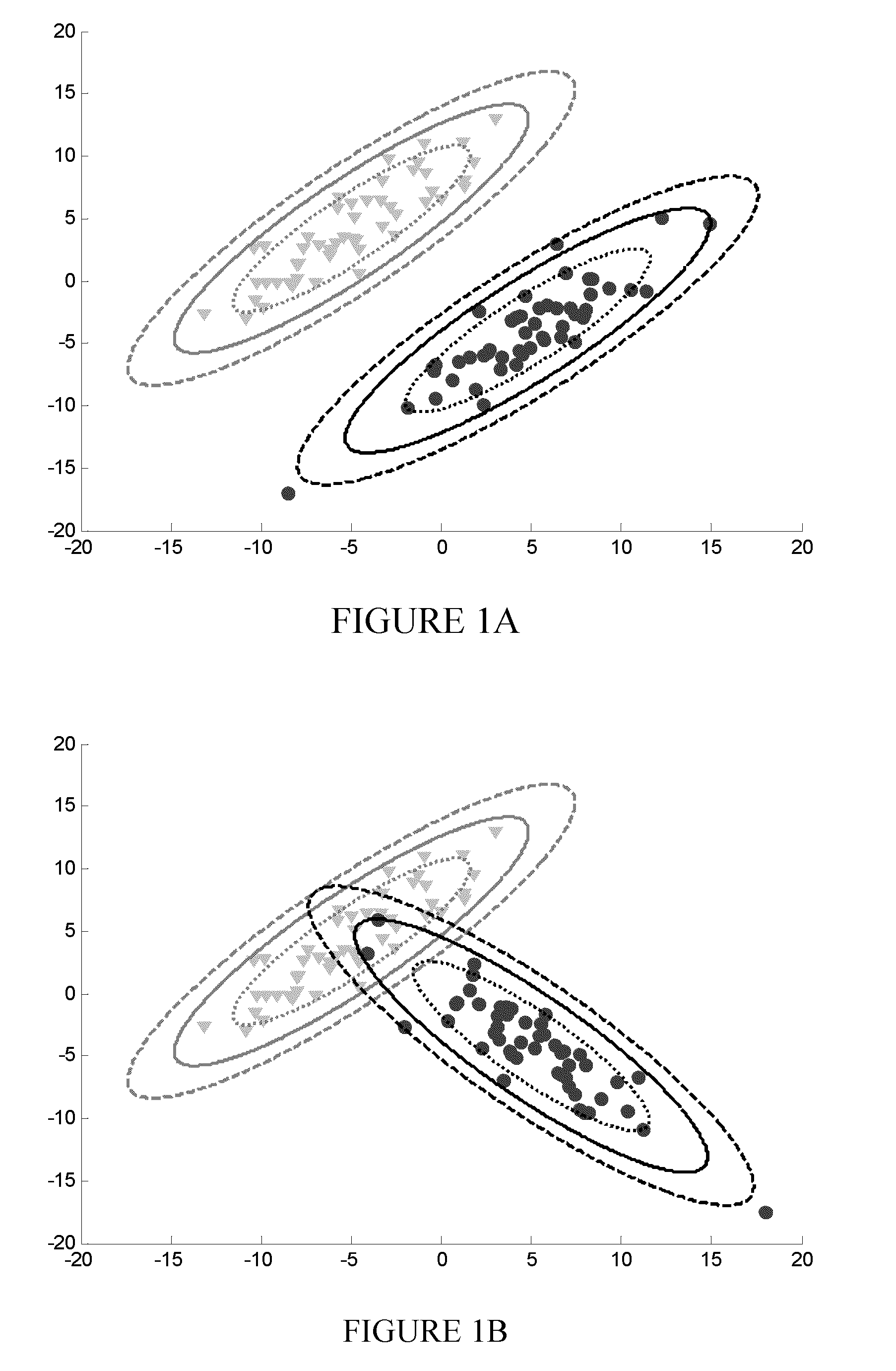Automated, objective and optimized feature selection in chemometric modeling (cluster resolution)
- Summary
- Abstract
- Description
- Claims
- Application Information
AI Technical Summary
Benefits of technology
Problems solved by technology
Method used
Image
Examples
Embodiment Construction
[0033]As noted above, it is desirable for a metric to consider the shapes, sizes and relative orientations of clusters of points on, for example, a PCA scores plot. Presented below is a metric that compares the separation and orientation of clusters relative to the distance between them. This novel metric has been termed cluster resolution. Also presented below is the use of this metric in a method to automatically construct an optimal PCA model for classifying a series of gasoline samples based upon their GC-MS profiles.
[0034]To demonstrate cluster resolution and its use for the automated, optimal feature selection, a test set of gasoline samples was used. Three gasoline samples having octane ratings of 87, 89, and 91 were obtained from a single local gas station in Edmonton, Alberta, Canada. The samples were diluted 20:1 by volume in pentane and analyzed by GC-MS. The GC-MS used for these experiments was a 7890A GC with a 5975 quadrupole MS (Agilent Technologies, Mississauga, ON) ...
PUM
 Login to View More
Login to View More Abstract
Description
Claims
Application Information
 Login to View More
Login to View More - R&D
- Intellectual Property
- Life Sciences
- Materials
- Tech Scout
- Unparalleled Data Quality
- Higher Quality Content
- 60% Fewer Hallucinations
Browse by: Latest US Patents, China's latest patents, Technical Efficacy Thesaurus, Application Domain, Technology Topic, Popular Technical Reports.
© 2025 PatSnap. All rights reserved.Legal|Privacy policy|Modern Slavery Act Transparency Statement|Sitemap|About US| Contact US: help@patsnap.com



